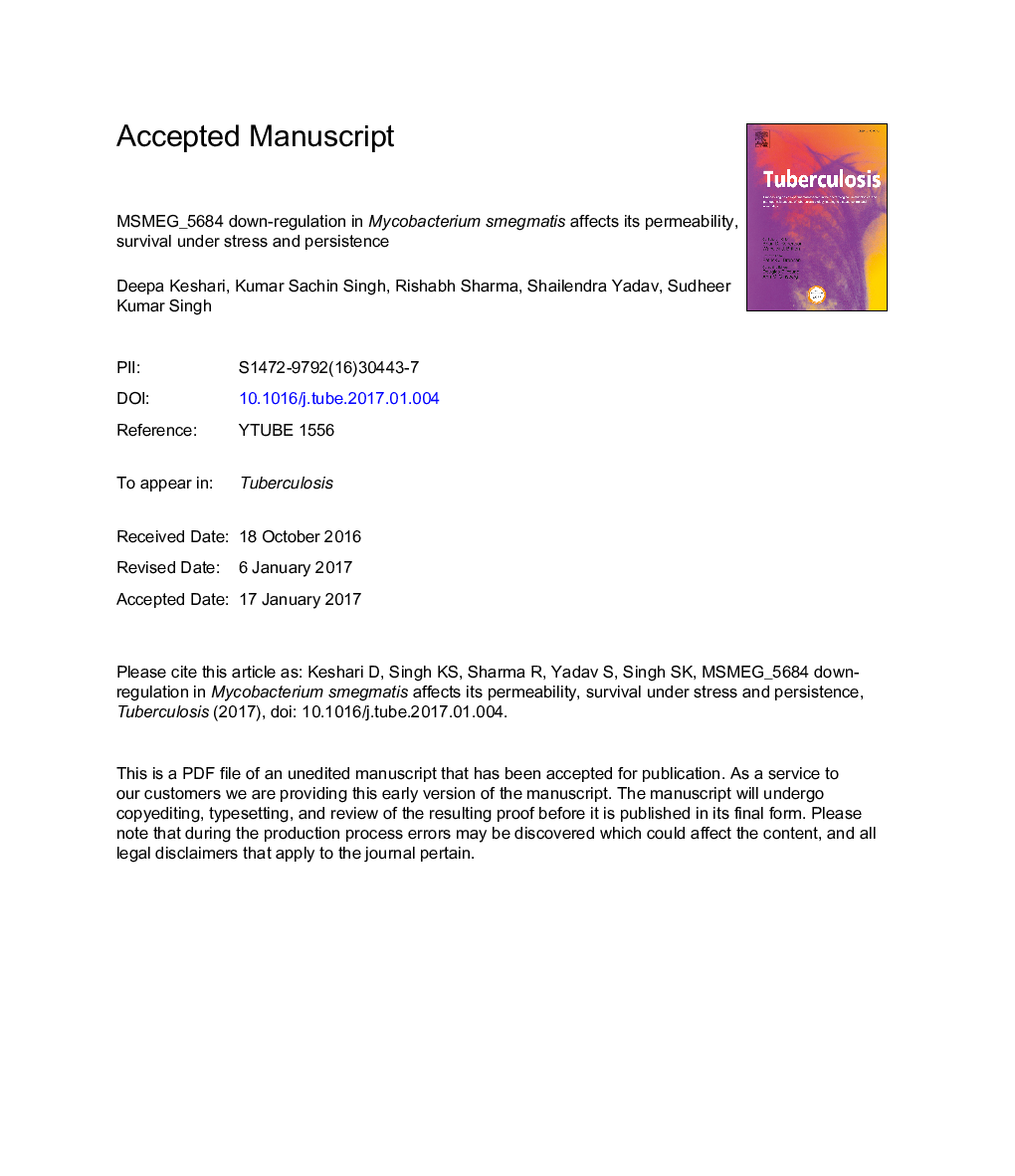| Article ID | Journal | Published Year | Pages | File Type |
|---|---|---|---|---|
| 5536223 | Tuberculosis | 2017 | 30 Pages |
Abstract
The Mycobacterium tuberculosis (Mtb) genome sequence and annotation details have been available for a long time; however physiological relevance of many ORFs remains poorly described. Mtb is a pathogenic strain; hence, surrogate strains such as Mycobacterium bovis BCG and Mycobacterium smegmatis (Msmeg) have also been studied to gain an understanding of mycobacterial physiology and metabolism. The Mycobacterium smegmatis mc2 155 ORF MSMEG_5684 is annotated as a part of serine biosynthetic pathway, however, its physiological significance remains to be established experimentally. To understand the relevance of SerC for Msmeg physiology we developed a recombinant Mycobacterium smegmatis with SerC knockdown (KD) and also complemented it with serC over-expressing construct (KDC). The KD showed reduced growth compared to wild-type (WT) and complemented strain on glycerol as carbon source. The growth of KD was restored after supplementation of serine. The survival studies with WT and KD under oxidative, nitrosative and detergent stresses showed increased susceptibility of KD. The KD also showed increased susceptibility to antimycobacterial agents and poor ability for in vitro persistence. Also, the serC transcript profiling showed increased expression under stress. The complementation studies with Msmeg serC showed growth restoration of E. coli-ÎserC in minimal medium.
Keywords
Related Topics
Life Sciences
Immunology and Microbiology
Applied Microbiology and Biotechnology
Authors
Deepa Keshari, Kumar Sachin Singh, Rishabh Sharma, Shailendra Yadav, Sudheer Kumar Singh,
